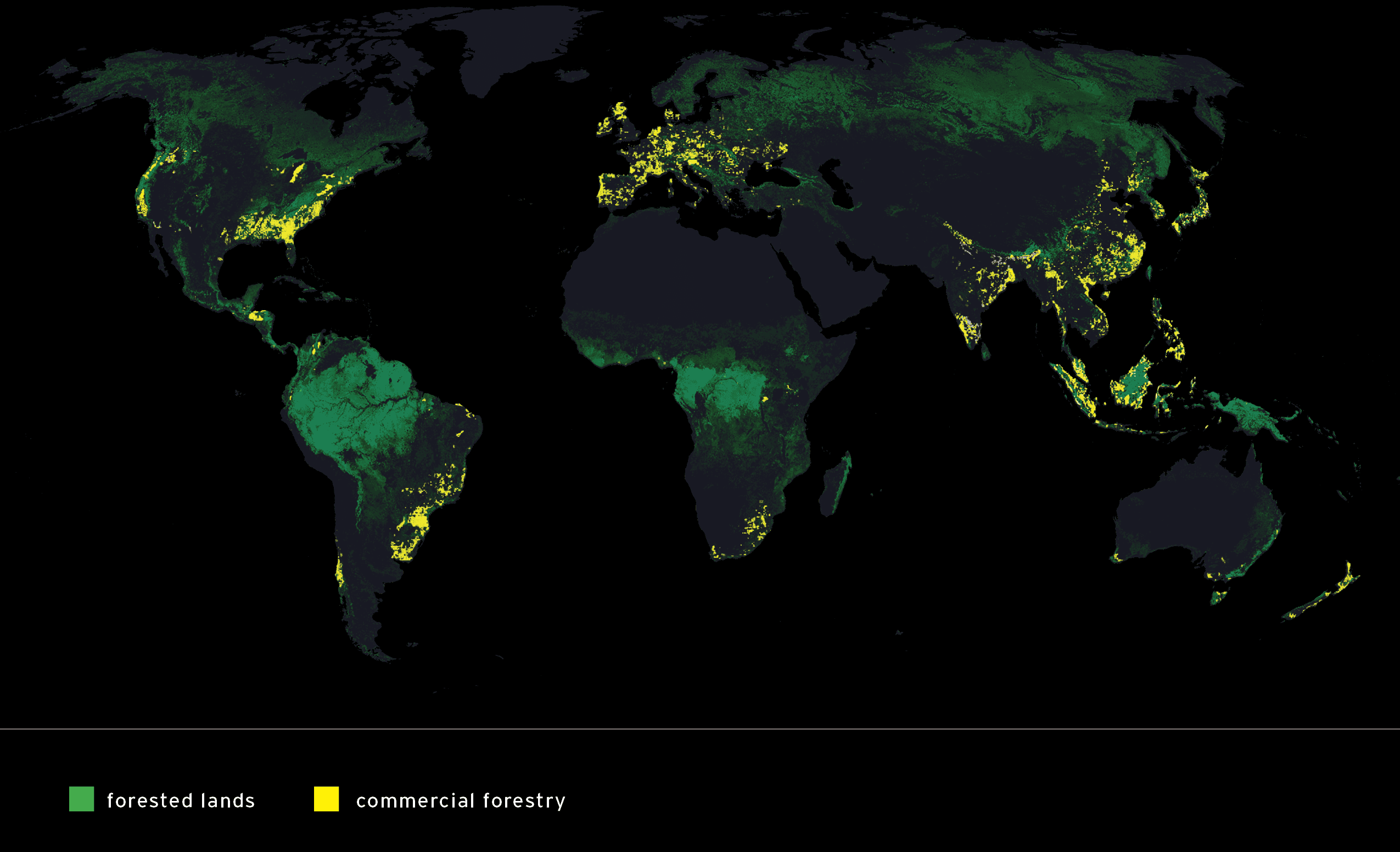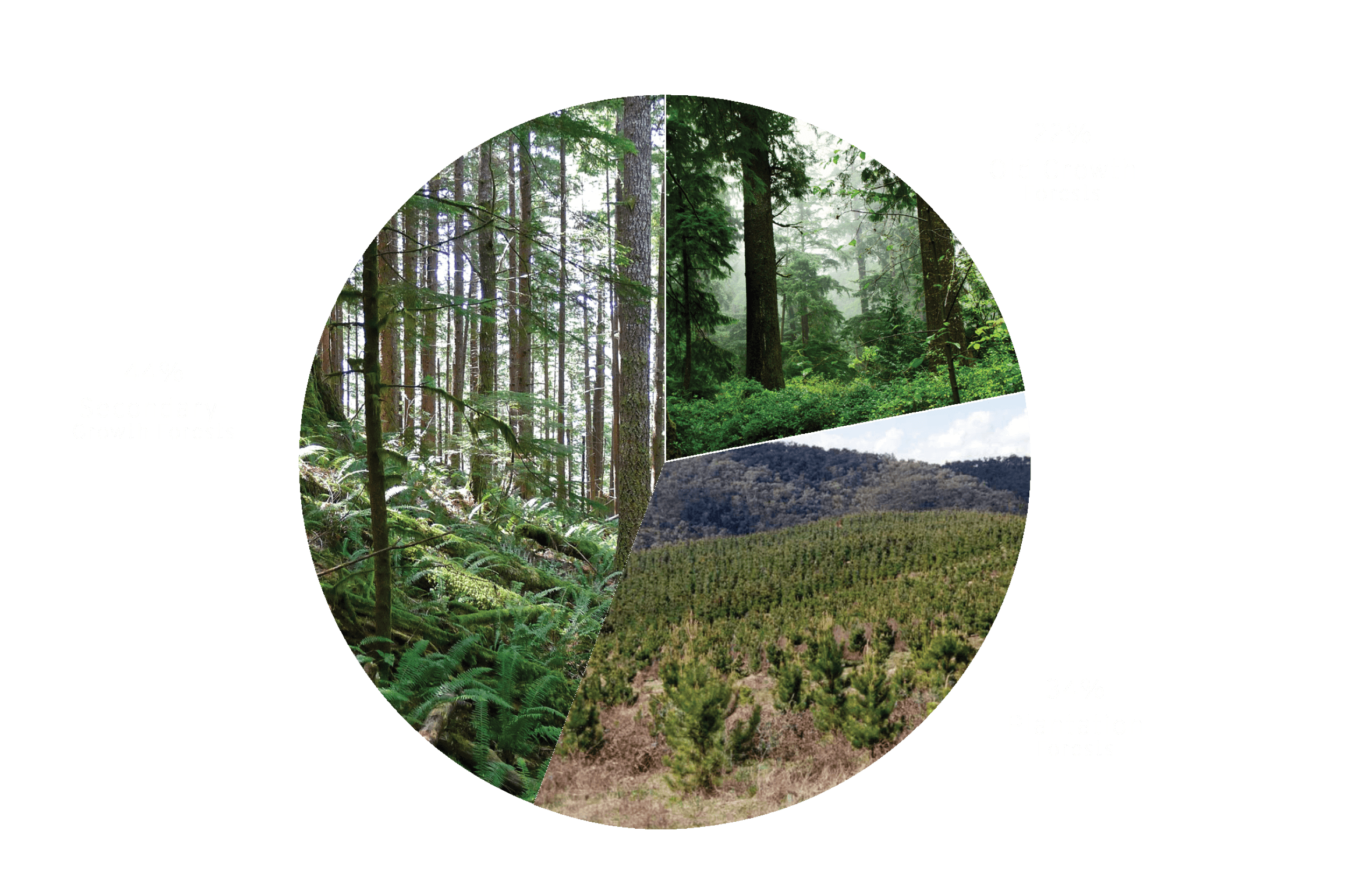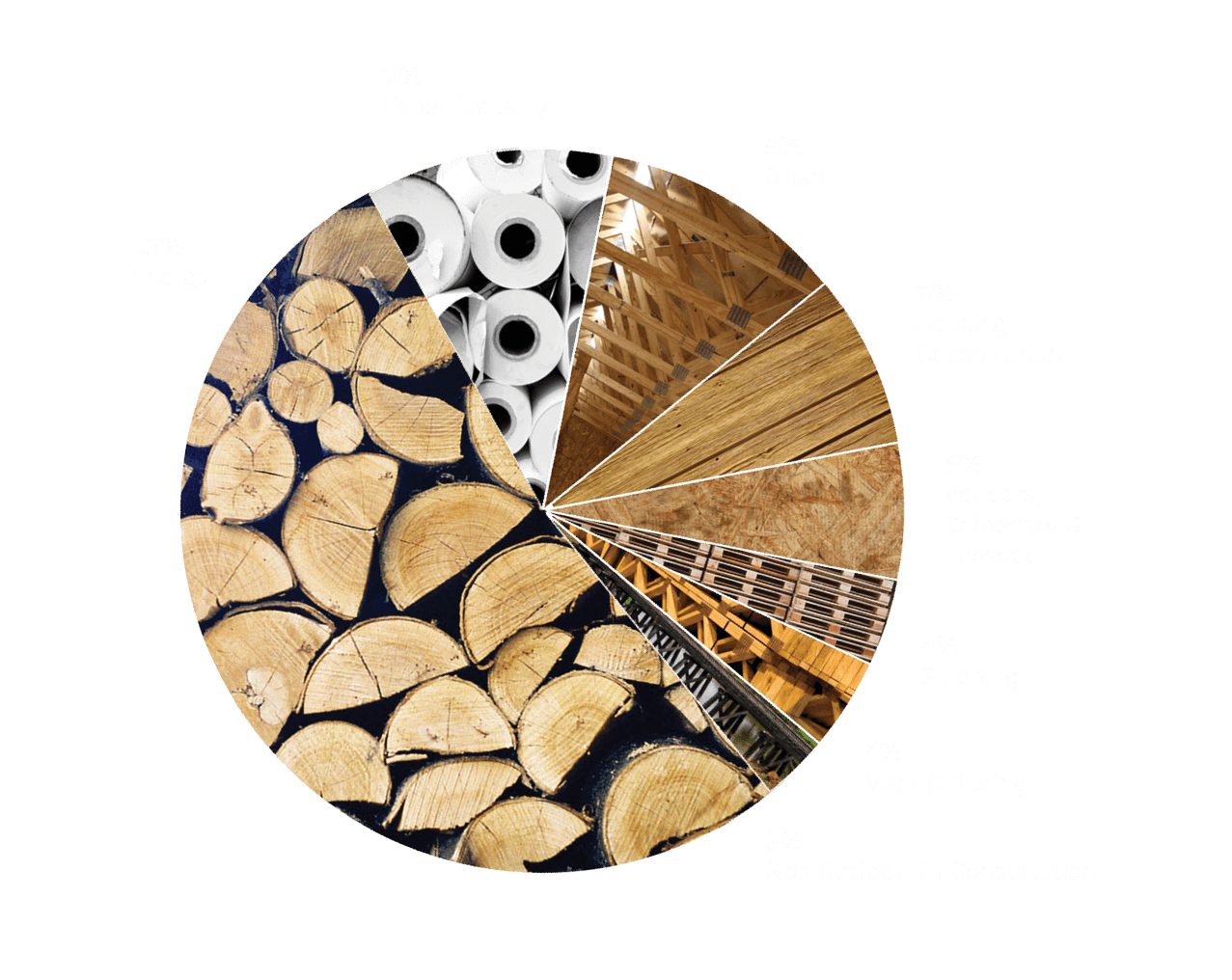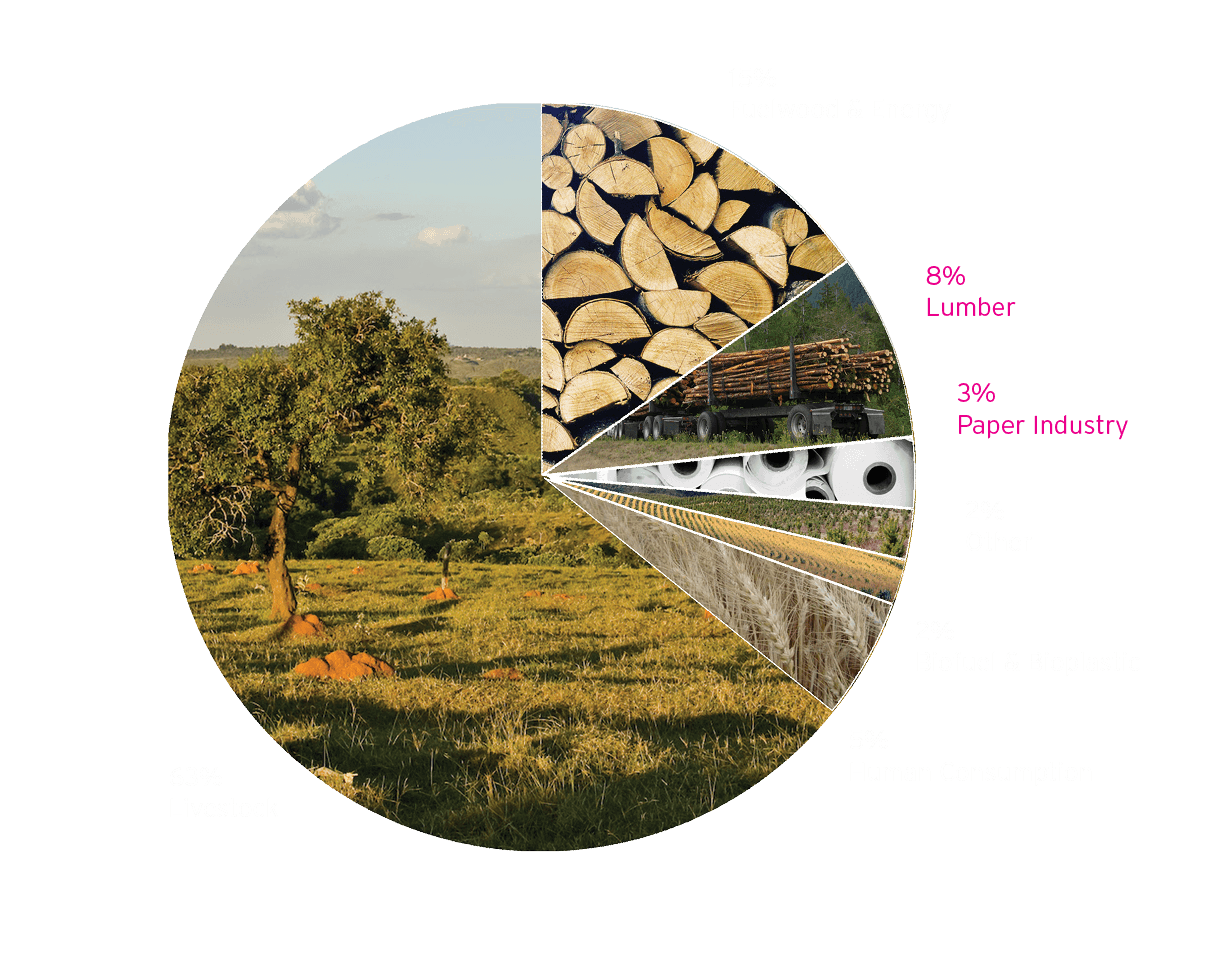Make forestry sustainable

7% OF GLOBAL FORESTS ARE INTENSIVELY MANAGED PLANTATIONS, PRIMARILY MONOCROPS THAT CANNOT SUPPORT NATIVE BIODIVERSITY.
NATURAL FORESTS ARE ALSO LOGGED EXTENSIVELY AND OFTEN ILLEGALLY. 15-30% OF ALL TIMBER TRADED INTERNATIONALLY IS THOUGHT TO BE ILLEGALLY LOGGED.
Sustainably managed plantations with more native species could reduce and absorb 5% of annual greenhouse gas emissions and increase biological diversity in commercial forests, while increased support and consumer demand for sustainably sourced forestry products can help reduce pressures of illegal logging on natural forests.
map sources: current forest cover: forest height, NASA. | Forestry / Tree Plantations and Tree Crop: Global Map of Planted Forests and Tree Crops. Harris, N.L., E.D. Goldman, and S. Gibbes. 2019. “Spatial Database of Planted Trees Version 1.0.” Technical Note. Washington, DC: World Resources Institute. Fig. 1. | emissions reductions and offsets potential based on estimates from Project Drawdown, World Resources Institute, The Nature Conservancy and Griscom et al. Natural Climate Solutions. PNAS (2017)
WHERE DOES OUR WOOD COME FROM?

OLD GROWTH FORESTS | “Large tracts of old-growth forest are still found in a number of regions, including Russia and Canada, the Amazon Basin, and parts of other countries with tropical rainforest.”
PLANTATION FORESTS | They tend to have been established relatively recently and consist of fast-growing and often non-native species. “Nearly half the world’s plantations are found in Asia. The former Soviet Union, and North and Central America account for another 30%.”
SECONDARY GROWTH FORESTS | “Natural forests which have been cut but have regrown, or been partially replanted, and are now managed more or less intensively for wood production. [These] forests have replaced virtually all the original forests of eastern North America, Europe, and large parts of South America and Asia.” - FAO
OECD Environmental Outlook, 2001.
USES OF WOOD/LUMBER

FAO | Solid Wood Timber Products Consumption in Major End Uses in the United States, 1950–2009. USDA.
CAUSES OF DEFORESTATION

SUPPORTING SUSTAINABLE FORESTRY PRACTICES CAN HELP PROTECT SPECIES AND PREVENT DESTRUCTION OF HABITATS.
Buy less.
Buy reclaimed or recycled.
Support local FSC-Certified Wood, Furniture & Paper Suppliers.
Next solution



Learn about Maya Lin’s fifth and final memorial: a multi-platform science based artwork that presents an ecological history of our world - past, present, and future.

Discover ecological histories and stories of former abundance, loss, and recovery on the map of memory.

Learn how we can reduce our emissions and protect and restore species and habitats – around the world.

See how art can help us rethink the problems we face, and give us hope that each one of us can make a difference.

Help make a global memorial something personal and close to home. Share your stories of the natural world.